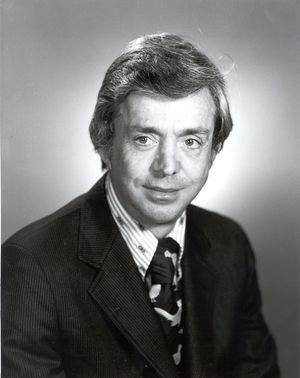Harold A. Rosen
- Birthdate
- 1926/03/20
- Birthplace
- New Orleans, LA, USA
- Death date
- 2017/01/30
- Associated organizations
- Raytheon, Hughes Aircraft Company
- Fields of study
- Communications
- Awards
- IEEE Alexander Graham Bell Medal, Astronautics Engineer Award, Communications Award from the American Institute of Aeronautics and Astronautics, Emmy from the National Academy of Television Arts and Sciences
Biography
Harold A. Rosen was born in New Orleans, Louisiana, on 20 March 1926. He earned his B.E. degree from Tulane University in 1947. A year later he, was awarded the M.S. degree in electrical engineering from the California Institute of Technology. He received the Ph.D. degree in electrical engineering from the same Institute in 1951.
Rosen began his career in 1948 with Raytheon Manufacturing Company. He joined Hughes Aircraft Company in 1956 and participated in the development of high-power, wide-band airborne radars, including transmitters, tracking antennas and system design. In 1959, he conceived a simple , practical, lightweight configuration for a synchronous communication satellite. Starting in 1960, he led a team of 30 engineers and scientists in developing a prototype of the satellite. From 1961 to 1964, he was the technical director of Syncom, the NASA synchronous communications satellite which was based on his concept. This was the world's first synchronous communications satellite and the forerunner of today's massive satellites that provide a world-wide network of high-capacity, broadband communications.
Later in his career, he provided technical direction for the development of the Advanced Syncom, which became the Applications Technology Satellite. ATS-I continues to perform after more than fifteen years in space.
In addition to these satellites, he has been involved in the development of a variety of earth terminals, with special emphasis on low cost stations suitable for the distribution of commercial television for rebroadcast and smaller ones for direct reception of instructional television by schools.
As Vice President of Engineering for Hughes Aircraft Company's Space and Communications Group, Rosen oversaw the development of communication satellites that are to Syncom what modern jet liners are to Kitty Hawk.
In 1976, Rosen was the first recipient of the L.M. Ericsson International Prize for outstanding contributions to telecommunications research and engineering. The award, given every three years, was presented to him by King Carl XVI Gustaf of Sweden. During his career, he had thirty-one U.S. patents, published many papers, and received numerous awards for outstanding achievement.
He was presented with the 1964 Astronautics Engineer Award from the National Space Club; the 1965 Golden Plate Award at the American Academy of Achievement's "Gathering of the Great" in Texas; the Communications Award from the American Institute of Aeronautics and Astronautics; and an 1966 Emmy from the National Academy of Television Arts and Sciences. He was again honored in 1967, with the Hughes L . A. Hyland Patent Award for his patents leading to the Company 's success in communications satellites. In 1968, he was presented the Communications Award from the American Institute of Astronautics and Aeronautics. Rosen was a Fellow of IEEE and a member of the National Academy of Engineering.
A water enthusiast, Dr. Rosen jogs on the beach near his home in Santa Monica, California. He has two sons, Robert, 32, and Rocky, 16. Family outings include such sports as skiing, scuba diving, windsurfing and an occasional 10-kilometer race.
Dr. Rosen won the 1982 IEEE Alexander Graham Bell Medal "For pioneering contributions to, and leadership in, geostationary communications satellites."
